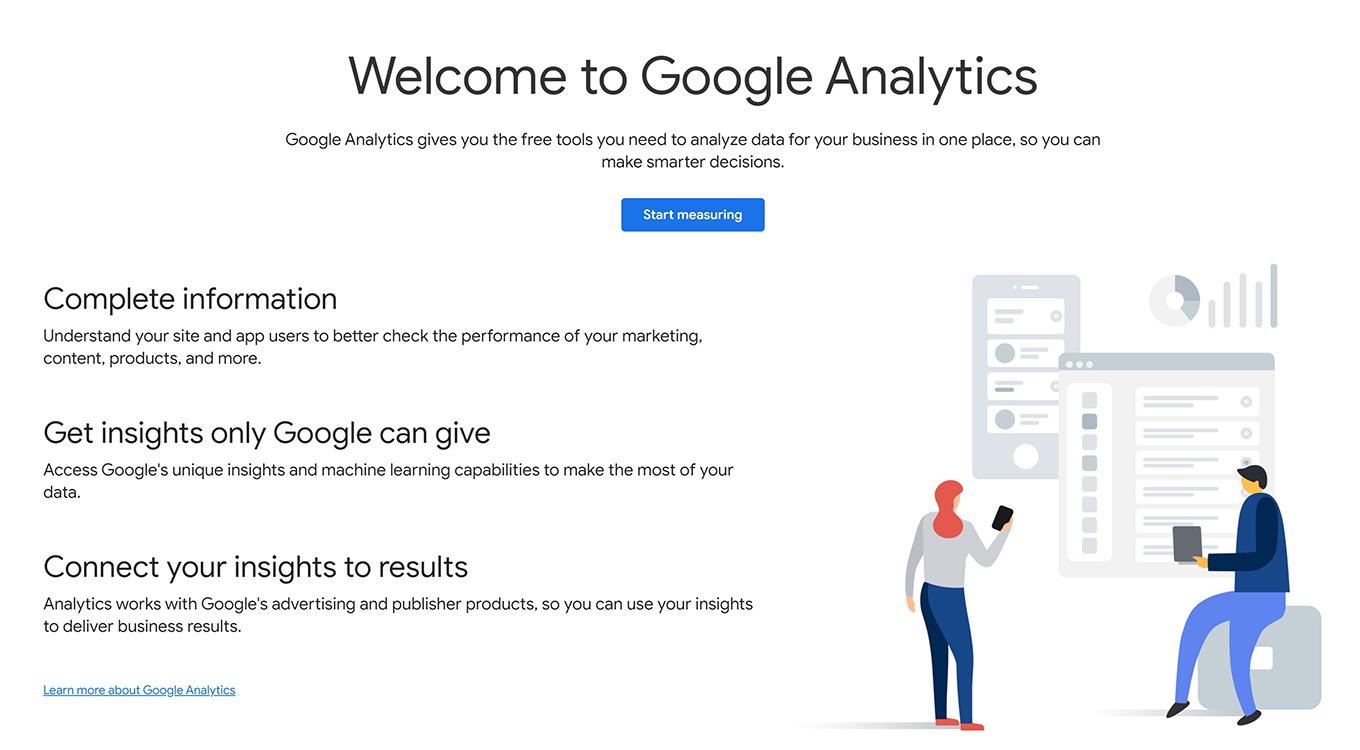
The world of digital marketing is constantly evolving. There is always a new channel, a new strategy, or a new opportunity to pursue.
Despite this changing environment, a handful of indispensable digital marketing skills form the foundation of every effective campaign. From content marketing to data analysis, these skills can help businesses of all sizes reach new customers, convert leads, and build an online presence.
Whether you're a marketing professional looking to stay ahead of the curve or a business owner hoping to scale your reach, this guide will cover the digital marketing skills needed to thrive in 2024 and beyond.
What is Digital Marketing?
Digital marketing is the art of promoting products or services across
digital channels, including:
- Social media
- Email
- Search engines
- Websites
- Apps
- And more!
Digital marketing combines traditional marketing tactics with modern technology to help businesses reach their
target audience where they are already hanging out. Businesses can build brand awareness, drive traffic, and ultimately increase sales by delivering relevant, personalized messages at the right time.
In short, digital marketing is the key to unlocking success in our increasingly digital world.
Digital Marketing Skills
Skill 1: Content Marketing
What It Is
Content marketing involves creating and distributing helpful, engaging, or educational content to attract leads and retain customers. This content often includes
blog posts, videos, e-books, infographics, white papers, and more.
How It Works
Content marketing requires a deep understanding of the target audience and their needs, questions, and objections. Once a company understands the customer's journey, it can craft valuable and relevant content for each sales funnel step.

This specificity enables each piece of content to help build awareness, establish trust, and nudge leads up
the
value ladder. For example, a software company may create a 3-part video-content campaign:
- Video 1: Highlight the problem to generate engagement
- Video 2: Demonstrate the SaaS solution to gather leads
- Video 3: Run a sale to create urgency
Why It Matters
Content marketing is one of today's most pervasive and effective digital marketing skills. Short-form videos, social media posts, and blog articles have become incredibly popular for audience-building, customer engagement, and sales. Many successful businesses have built their entire
marketing strategy around content marketing and becoming trusted resources in their industries.
Skill 2: Search Engine Optimization (SEO)
What It Is
SEO is the practice of optimizing a website to make it more valuable to users and attractive to search engines. This process calls for improving the content, structure, and user experience to better satisfy search intent and help webpages rank higher in search engine results pages (SERPs).
How It Works
Search engines use complex algorithms to index and rank website content for individual search queries. SEO works by reverse-engineering these algorithms and then making changes to improve a website's visibility in the SERPs.
This requires
optimizing on-page and off-page elements. On-page elements include page titles, meta descriptions, headings, keyword research, and content quality.
Off-page SEO requires building high-quality backlinks from relevant and authoritative websites in the same niche.
Why It Matters
SEO enables businesses to increase their online visibility and generate relatively stable traffic. SEO also helps to establish credibility and authority in a given industry, as businesses that rank higher in search results are often perceived as more trustworthy.
Although the advent of ChatGPT and other
AI content tools has forced search engines to adapt their algorithms, SEO remains a viable long-term strategy for customer acquisition.
Skill 3: Email Marketing
What It Is
Email marketing is the process of building, maintaining, and monetizing an email list. You can use this "owned" marketing asset to nurture customer relationships, increase brand awareness, and directly promote product launches or service offerings. This can occur through announcements, company updates, product information, or special offers.
How It Works
Email marketing typically begins by developing an email list. This list may include previous customers, interested leads, and newsletter or blog subscribers. Collecting email addresses can be easily done by adding an opt-in box to the footer of a website or a pop-up form to landing pages.
Once the list is created, businesses can begin to draft and send emails. Email marketing supports communication across the entire customer journey, from newsletters to automated flows. This helps with fostering customer loyalty, maintaining engagement, and driving conversions.
And by leveraging the power of segmentation and personalization, marketers can consistently send the right email at the right time to produce the best results.
Why It Matters
Email marketing is one of the most valuable digital marketing skills because email is the highest ROI channel. On average, businesses generate
$36 of revenue for every dollar spent on email marketing. And because customer emails are one of the only marketing assets businesses truly own, email marketing is essential for diversifying risk and reducing dependence on any one channel.
What It Is
Social media marketing consists of promoting a brand, product, or service on social media platforms. This can include sharing posts, images, videos, and stories to build an audience and engage followers on apps such as Facebook, Instagram, Pinterest, and more.

How It Works
To convert social media users into customers, businesses need to identify their target audience, develop a brand voice, and create tailored content for their chosen platforms. This is because the demographics of each social app vary widely, and the same content may not work across multiple sites.
TikTok, for example, calls for fast cuts, attention-grabbing audio, and unexpected hooks to grab user attention. LinkedIn, on the other hand, is known for more professional "thought leadership" pieces. So while cross-posting from Instagram Reels to TikTok may work, doing the same for LinkedIn won't. It's crucial to understand these nuances and tailor social media content accordingly.
Once social media marketers crack the code on a given platform, they can also run paid campaigns to reach an even larger audience. This approach enables businesses to target specific customer personas based on behaviors and interests and craft more tailored messaging. Although social media ads can be pricey, they are one of the fastest ways to scale campaigns and drive quality leads.
Why It Matters
With
billions of users worldwide, social media marketing is one of the most important digital marketing skills to master. Social media platforms offer businesses unparalleled opportunities to engage with their target audience, build brand awareness, and drive revenue.
Plus, with a wealth of data and analytics to inform decision-making, savvy marketers can test and optimize messages and creatives to maximize effectiveness.
Skill 5: Influencer Marketing
What It Is
Influencer marketing involves connecting with social media influencers and content creators in the same niche as the business. These influencers then promote products and services to their followers, who, in turn, become customers. For many businesses, influencer marketing is a viable alternative to paid social media marketing because it also helps build brand credibility and reach new audiences.
How It Works
Influencer selection is the most important part of influencer marketing. For the resulting campaign to convert well, it is critical that the promotion feels organic and natural. This requires the creator to endorse the brand and genuinely be interested in the space.
And while having a sizable audience is nice — it's not a must. Micro-influencers tend to have deeper relationships with their followers, producing more cost-effective results.
Typical influencer partnerships include sponsored posts, reviews, product demonstrations, and giveaways. Influencers are often compensated for this work through free products, affiliate earnings, or upfront payments.
To
get in touch with influencers who are often flooded with direct messages, try to stand out from the crowd. Leave a few thoughtful comments, respond to their stories, and even reach out via email if you have contact information.
Alternatively, you can ship them your product directly, without a formal agreement in place, to introduce yourself. This strategy, known as
seeding, can help establish authentic relationships before getting down to business.
Why It Matters
Influencer marketing allows businesses to access specific customer segments and tap into niche markets. By working with influencers who cater to a particular audience, businesses can reach specific hard-to-target customers.
Influencers also serve as trusted intermediaries between brands and their audiences. When influencers accept a partnership and share their opinions with their followers, their credibility is on the line. In risking this, they help alleviate any customer skepticism and encourage followers to act on their recommendations. In turn, this endorsement can lead to higher conversion rates.
Skill 6: Data Analysis
What It Is
Data analysis is the practice of examining marketing data to extract actionable insights. This requires aggregating data across marketing channels, organizing it into a manageable format, and then analyzing it to better understand campaign performance, customer behavior, or overall effectiveness.

A great tool to use for Data Analysis is Google Analytics, which gives you everything you need to analyze data for your business.
How It Works
Digital businesses often use web analytics platforms like Google Analytics to record website activity. They may also use social media monitoring tools to track brand mentions and engagement and email marketing software to analyze the performance of their email campaigns.
Once this data is collected, marketers review key metrics such as:
- Click through rate
- Page views
- Conversion rate
- Customer acquisition costs
- Average engagement time
- Returning visitors
These figures directly affect other digital marketing skills, like content marketing, SEO, and social media marketing. So it is important to monitor them over time and learn how to identify causal relationships between them and the businesses' digital marketing initiatives.
Why It Matters
Data analysis is necessary for effective digital marketing because it allows businesses to make
data-driven decisions and optimize campaigns for better performance. Marketers can drive growth and allocate resources more efficiently by understanding which channels to prioritize, what messaging resonates best, and which campaigns are most successful.
Skill 7: Marketing Automation
What It Is
Marketing automation involves using software to automate tasks and increase efficiency. Rather than manually contacting every customer, automation tools enable businesses to send a timely email and SMS messages, employ targeted ads, and personalize web content at scale.
How It Works
Marketing automation tools, such as HubSpot, Klaviyo, and
CoSchedule, are used to streamline repetitive processes and create automated workflows. Here are a few examples of how digital businesses can use marketing automation:
- Capture and manage new leads
- Automatically send welcome emails
- Trigger an email sequence after specific actions or milestones
- Schedule social media posts in advance
- Personalize communication based on demographics, behavior, or interests
- Track and analyze campaign performance
- Integrate with other automation tools
These platforms allow marketers to design and implement complex campaigns that nudge customers through the
sales funnel and tactically overcome objections. This improves the customer experience and results in cheaper customer acquisition costs.
Why It Matters
Marketing automation drives greater ROI by guiding customers through the purchase journey without using any additional resources. By automating key processes, marketers can focus on more creative and strategic aspects of their work. And when implemented effectively, marketing automation leads to increased engagement, conversion rates, and customer loyalty.
Skill 8: Conversion Rate Optimization (CRO)
What It Is
Conversion Rate Optimization (CRO) is the process of improving the performance of a webpage based on historical data. The goal of CRO is to increase the percentage of website visitors that take a desired action, such as placing an order or completing a contact form. Through the use of heat maps and A/B tests, marketers can make it easier for visitors to convert into customers one step at a time.
How It Works
CRO involves analyzing website data to identify areas where visitors may be experiencing friction or obstacles that prevent them from taking action. Some common areas to focus on include website layout, navigation, copywriting, and design. Once potential issues have been identified, marketers can implement changes and measure their effectiveness with A/B or multivariate testing.
A/B testing involves creating two versions of a webpage with different elements, such as a headline or call-to-action button, and then randomly showing each version to a subset of visitors. The version that results in more conversions is then implemented on the website.
Multivariate testing is similar to A/B testing but involves tweaking multiple elements on a webpage simultaneously to determine the optimal combination.
Why It Matters
CRO has a direct impact on the profitability of a business. By improving the conversion rate of a digital marketing campaign, businesses enjoy greater sales with the
samemarketing spend and cost structure. Plus, because website users get a smoother, more enjoyable digital experience, CRO also contributes to retention and referral marketing.
Final Thoughts
Businesses must equip themselves with diverse digital marketing skills to adapt to the changing landscape and achieve success online. From content marketing to email marketing to CRO, these capabilities are essential to creating effective campaigns that drive business growth.
With new tools and strategies popping up constantly, it's important to stay up to date and capitalize on emerging opportunities. So whether you're a seasoned pro or just starting out, keep on learning and growing. The future of digital marketing awaits!
 The world of digital marketing is constantly evolving. There is always a new channel, a new strategy, or a new opportunity to pursue.
Despite this changing environment, a handful of indispensable digital marketing skills form the foundation of every effective campaign. From content marketing to data analysis, these skills can help businesses of all sizes reach new customers, convert leads, and build an online presence.
Whether you're a marketing professional looking to stay ahead of the curve or a business owner hoping to scale your reach, this guide will cover the digital marketing skills needed to thrive in 2024 and beyond.
The world of digital marketing is constantly evolving. There is always a new channel, a new strategy, or a new opportunity to pursue.
Despite this changing environment, a handful of indispensable digital marketing skills form the foundation of every effective campaign. From content marketing to data analysis, these skills can help businesses of all sizes reach new customers, convert leads, and build an online presence.
Whether you're a marketing professional looking to stay ahead of the curve or a business owner hoping to scale your reach, this guide will cover the digital marketing skills needed to thrive in 2024 and beyond.
 This specificity enables each piece of content to help build awareness, establish trust, and nudge leads up the value ladder. For example, a software company may create a 3-part video-content campaign:
This specificity enables each piece of content to help build awareness, establish trust, and nudge leads up the value ladder. For example, a software company may create a 3-part video-content campaign:

 A great tool to use for Data Analysis is Google Analytics, which gives you everything you need to analyze data for your business.
A great tool to use for Data Analysis is Google Analytics, which gives you everything you need to analyze data for your business.


